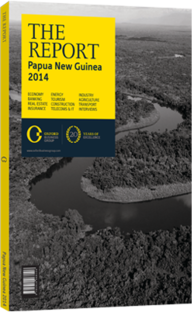This chapter includes the following articles.
Banking

Despite significant challenges linked to poor infrastructure, inadequate credit information and a largely rural population, commercial lenders are developing innovative means of broadening the sector’s reach. Framed by the government and the country’s central bank, the National Financial Inclusion and Financial Literacy Strategy encourages private banks, microfinance institutions, non-bank financial institutions and savings and loans societies to partner with non-financial actors to bridge the gap to access. Ongoing upgrades to Papua New Guinea’s financial infrastructure will improve banks’ efficiency and support alternative means of reaching out to low-income clients. Although lending growth is expected to cool in line with the wider economy in 2014, bankers have their eyes set on significant public infrastructure spending to sustain their loan books. Financial institutions are making progress in terms of providing services to PNGs unbanked population and lenders’ role as financial intermediaries is growing. Seeing through reforms will be key to making the financial system more efficient and broad-based. This chapter contains interviews with Loi M Bakani, Governor, Bank of Papua New Guinea; Mark Baker, Managing Director, ANZ Papua New Guinea; and Tony Westaway, Managing Director, Nationwide Microbank.

